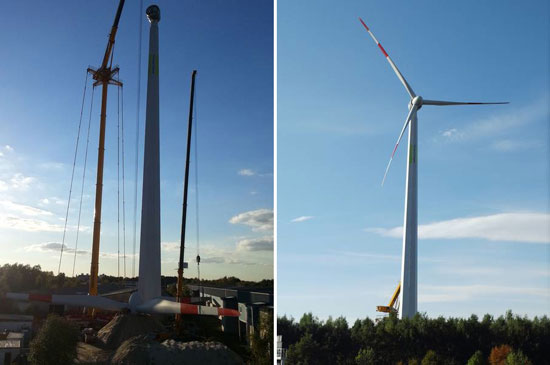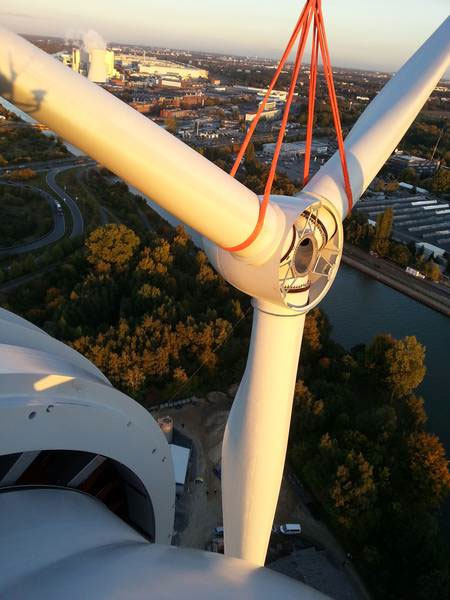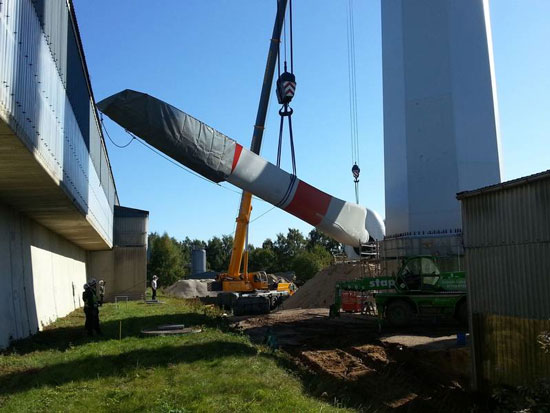A German engineering firm has erected the world’s first wooden wind turbine tower in Hanover, a 100-metre-tall multi-megawatt wind turbine that can produce electricity for about 1,000 households.
“The TimberTower is a milestone on the way to green energy production because we use 99 per cent renewable resources,” says TimberTower managing director Holger Giebel.
Wind turbines are becoming taller and larger in order to increase profit, as the higher the tower stands, the more energy can be produced.
However, wind turbines with conventional steel towers are inefficient when to greate heights. Wood, on the other hand, has stable material prices, a longer service life, is simple to dismantle, is more sustainable and has lower project costs. With the TimberTower standing 100 metres high, the wooden turbine required about 300 fewer tons of sheet steel to build than a traditional turbine.
Its method of construction and transportation also produces distinct advantages.

“Onshore steel masts can only reach a maximum height of about 110 metres,” says Giebel. “That’s because the base of a 110-metre mast has to be 4.2 metres in diameter, and that’s the maximum size that can pass under road bridges in Germany and elsewhere. That doesn’t apply to a mast made of wood, which is assembled on the construction site, thus saving in addition enormous transportation costs.”
The TimberTower is manufactured as a linked system out of glued laminated timber panels and surface components, which are assembled on-site into a closed, hollow body with a hexagonal, octagonal or dodecagonal cross-section. The tower doesn’t rely on ‘abnormal loads’ transportation and can be carried in standard containers (40 feet) or on standard trucks.
The construction of the TimberTower is also quick and easy. The fasteners are integrated in the tower’s individual components. The foundation is created as a flat or deep foundation dependent on the properties of the ground. The dimensions and diameter of the foundation are identical to the tubular steel tower. However, the TimberTower does not need a base mounting part. Visually, it barely differs from conventional towers, it is slim and tapers off upward. However, it does differ in its service life with the engineering firm guaranteeing a minimum tower life cycle of 40 years.

The Hanover turbine will now undergo a testing phase with the aim to be supplying current by the end of 2012.
Meanwhile, a 140-metre tower is also in development. The extra height should allow the turbine to generate between 30 and 40 per cent more electricity than on a conventional mast, while construction cost would be 20 per cent lower.
TimberTower hopes to reduce the cost of wind power generation to just five euro cents per kilowatt, which would make it almost as cheap as electricity generated from nuclear power plants.

By Justin McGar









